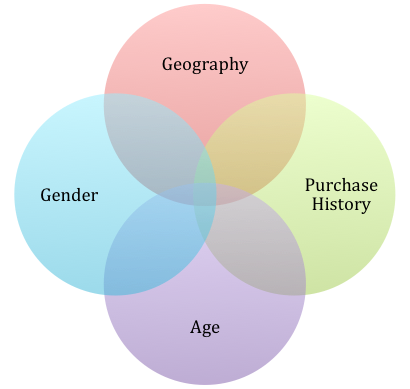A newsletter can be a fantastic (and low cost) way to organically grow your customer and prospect database. It lets you shape how your brand is viewed and position your company as a thought leader, regardless of your industry or specialization.
There are four milestones for any newsletter subscriber, and moving people through them is critical to your success.
Lifecycle of a Newsletter Subscriber
However, your newsletter is only valuable if people actually read it. So what are some best practices for growing your newsletter subscriber list? How do you get people to find and read your newsletter, and convert them into paying customers? Here are 6 steps to turn your newsletter into a sales and lead generation machine.
1. Segment your database. Resist the urge to mass blast your newsletter to every email address in your database, as that can lead to low engagement and a high percentage of unsubscribes.
Once someone unsubscribes, they’re most likely lost forever, so it would be better to send to a smaller list that will be more engaged than to a larger list and lose some people from receiving any of your future email messaging. Determine various target attributes of your target market and narrow down to those who share the most.
Sample Attributes for Segmentation:
2. Stay focused. If you try to be everything to everyone, you will succeed in being relevant to no one. General content tends to be less interesting, so focus on a particular issue or segment. If you have multiple types of buyers, send targeted messaging to each one. That may mean creating multiple newsletters or versions of your newsletter – and yes, that’s extra work, but the increased engagement is worth it.
3. Provide quality content. Write targeted, unique, value-added content that will appeal to your target readers. Nothing else matters if your content is uninteresting or generic. Provide enough “meat” to showcase your expertise, but don’t give away all your proprietary knowledge for free. Find a happy medium and your readers will stay interested.
Remember that the quality of your content will drive engagement. Don’t try to pass off sales copy as “content” – if your product or service is dry or doesn’t really change much over time, talk about something related that your readers will find interesting. For each article, ask yourself, “what value is this providing to my readers?” If the answer isn’t immediate or clear to you, it certainly won’t be to your readers.
4. Be visually appealing. Attention spans and time spent reading emails continue to shrink as life happens faster and faster, so provide facts and other information in quickly digestible chunks. Be sure to position your most important and engaging points at the top of your content, and use bullets and short paragraphs. Where possible, use images and create infographics – which also happen to be great linkbait.
5. Don’t focus on the immediate sale. Second only to creating quality content, this is where many newsletters too often go awry. If your “newsletter” is little more than a product ad, your readers will soon start ignoring future emails from you. The term “newsletter” implies content. News. Articles. Recipes. Stories. It’s fine to include an ad or promotion in your newsletter, but it shouldn’t be the primary focus. Be sure to create content that is relevant and complimentary to your products or services, or better yet, enhances it.
Note: An exception to this rule is when someone specifically requests to receive promotions via email, but those should not be labeled as newsletters to begin with. For those people, an email titled “Deals of the week,” or “flash sale” or “customer loyalty promotion” would be more accurate and get better response.
6. Provide clear calls to action. Wait, didn’t I just say not to focus on the immediate sale? Yes, but you can still convert readers without shoving a buy now button in their face. Your readers are by definition engaged with your brand. Give them a clear next step at the point they’re most likely to convert – right after they’ve consumed quality content from you! Even better, give them a next step that is related to the content they just read. Just be sure your landing pages from the call to action appropriately match what the reader would expect to see after clicking (e.g. a sale price, further description, etc.).
Newsletters are one of the most effective ways to stay consistently engaged with your database – if you do them well. It may feel a bit overwhelming to start, but stick with it and I promise you will start seeing positive results!
Want help with your own eCommerce email marketing efforts? Contact us!

eBook
Looking For A New ESP?
Download Our Klaviyo vs Salesforce
Comparison .PDF Today!
Explore tags:
About the author
Subscribe to the Groove Newsletter
Get the latest updates and insights straight to your inbox






